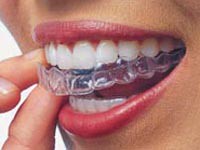 An increasing number of adults are getting braces nowadays in order to straighten their teeth. Whereas braces are traditionally associated with children and adolescents, recent innovations in the dental industry have made it more plausible for adults to get braces.
An increasing number of adults are getting braces nowadays in order to straighten their teeth. Whereas braces are traditionally associated with children and adolescents, recent innovations in the dental industry have made it more plausible for adults to get braces.
Reasons to Get Braces as an Adult
First of all, braces aren’t necessarily what they used to be. The options are more lightweight and cosmetically friendly than they used to be, and the time frame that adults have to wear braces is generally between 12 and 20 months. As an adult, consumers might be able to afford braces whereas their parents couldn’t when they when children. In addition to the cosmetic benefits adults can gain from wearing braces, there are also health benefits too. Misaligned teeth create an increased chance for plaque and food buildup, which can contribute to dental health issues over time.
Types of Adult Braces
Metal Braces
This is the type braces that most people conjure to mind when they hear the term “braces.” Metal braces, as their name implies, are constructed of metal, although the metal nowadays tends to be much thinner and more lightweight than it was in days past. The bands and appliances that used to wrap all the way around the tooth aren’t usually used anymore. Instead, much smaller, bonded brackets attached to the front of the teeth do the work.
Ceramic Braces
Ceramic braces, also simply referred to as clear braces, work the same way that metal braces do, but the fixture affixed to the tooth is clear in appearance rather than metal. Adhesive holds the brackets in place on the tooth, but care must be taken because the adhesive can stain from dark drinks and smoking. Dentists usually replace the adhesive tiles every time these braces are adjusted to keep them from looking discolored.
Lingual Braces
Lingual braces are ones that are placed on the inside of the teeth rather than on the outside. These braces must be customized and bonded to hide behind the teeth, and they are generally a much more complicated process than regular braces. These types of braces aren’t ideal for small teeth, and they can get in the way of the tongue, causing possible speech problems and injuries.
Invisible Braces
 Invisible Braces are by far the most popular braces options for adults. These braces are practically invisible and generally don’t require as much maintenance or visits to the dentist as the other types of braces. They are made up of a series of clear aligners that are specifically designed to a patient’s mouth. The aligners are replaced every week or two, as instructed by the dentist, and they work to move teeth without the notice-ability of other types of braces. Patients must remove the aligners when eating or brushing their teeth, and they must be worn at least 20 hours a day.
Invisible Braces are by far the most popular braces options for adults. These braces are practically invisible and generally don’t require as much maintenance or visits to the dentist as the other types of braces. They are made up of a series of clear aligners that are specifically designed to a patient’s mouth. The aligners are replaced every week or two, as instructed by the dentist, and they work to move teeth without the notice-ability of other types of braces. Patients must remove the aligners when eating or brushing their teeth, and they must be worn at least 20 hours a day.
References:
Medicine Plus. “Orthodontia.” Retrieved on October 23, 2015, from https://www.nlm.nih.gov/medlineplus/orthodontia.html/.
The United States National Library of Medicine National Institutes of Health
8600 Rockville Pike,
Bethesda MD, 20894 USA
1-888-FIND-NLM
http://www.ncbi.nlm.nih.gov
Images:
https://farm4.staticflickr.com/3847/14346461531_66defdd6c8_m.jpg
https://farm4.staticflickr.com/3753/9782358693_f55142a6de_m.jpg